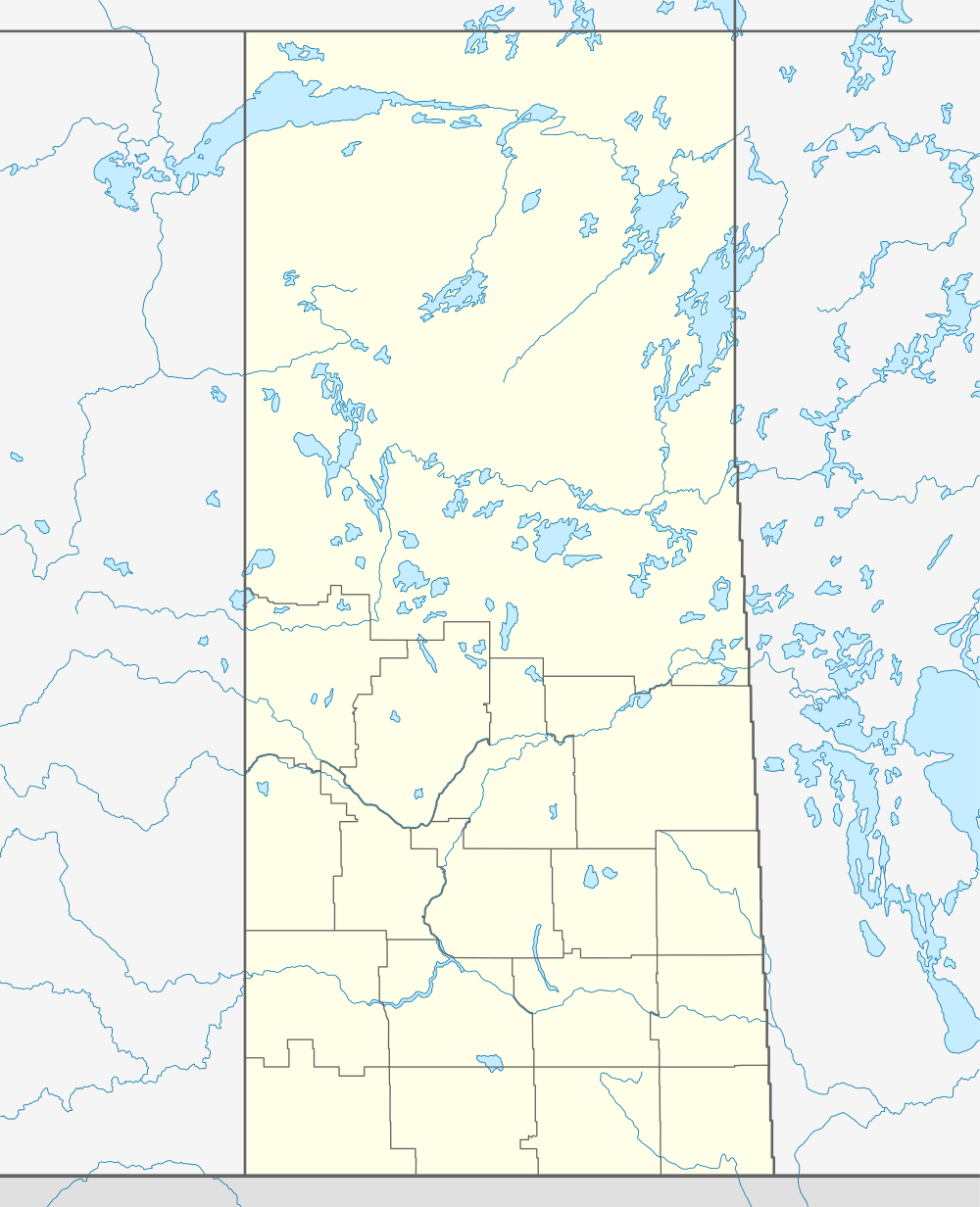Pelly, Saskatchewan
| Village of Pelly | |
|---|---|
| Village | |
| Motto: Pearl of the Parkland | |
 Village of Pelly  Village of Pelly Location of Pelly in Saskatchewan | |
| Coordinates: 51°51′47″N 101°54′54″W / 51.863°N 101.915°WCoordinates: 51°51′47″N 101°54′54″W / 51.863°N 101.915°W | |
| Country | Canada |
| Province | Saskatchewan |
| Region | Saskatchewan |
| Census division | 9 |
| Rural Municipality | St. Philips No. 301 |
| Post Office Founded | Canada Post |
| Incorporated (Village) | 1911 |
| Government | |
| • Mayor | Sharon Nelson |
| • Administrator | Victoria Makohoniuk |
| • Governing body | Pelly Village Council |
| Area | |
| • Total | 0.96 km2 (0.37 sq mi) |
| Population (2006) | |
| • Total | 287 |
| • Density | 315.5/km2 (817/sq mi) |
| Time zone | CST |
| Postal code | S0A 2Z0 |
| Area code(s) | 306 |
| Highways |
Highway 49 Highway 8 |
| Website | Pelly Saskatchewan homepage |
| [1][2][3][4] | |
Pelly is an incorporated village in rural Saskatchewan, Canada.
The village is the closest inhabited settlement to the historical sites of Fort Livingstone, a former capital of the North-West Territories and a former North-West Mounted Police headquarters, and Fort Pelly, the Swan River district headquarters for the Hudson's Bay Company, from which the village gets its name.
Demographics
| Canada census – Pelly, Saskatchewan community profile | |||
|---|---|---|---|
| 2001 | |||
| Population: | 303 (-8.5% from 1996) | ||
| Land area: | 0.96 km2 (0.37 sq mi) | ||
| Population density: | 315.5/km2 (817/sq mi) | ||
| Median age: | 59.6 (M: 57.3, F: 61.0) | ||
| Total private dwellings: | 195 | ||
| Median household income: | $22,423 | ||
| References: 2001[5] | |||
Climate
| Climate data for Pelly | |||||||||||||
|---|---|---|---|---|---|---|---|---|---|---|---|---|---|
| Month | Jan | Feb | Mar | Apr | May | Jun | Jul | Aug | Sep | Oct | Nov | Dec | Year |
| Record high °C (°F) | 10 (50) |
10.5 (50.9) |
17.5 (63.5) |
28.3 (82.9) |
37 (99) |
35 (95) |
36.7 (98.1) |
37.2 (99) |
33.3 (91.9) |
29 (84) |
18.3 (64.9) |
10.6 (51.1) |
37.2 (99) |
| Average high °C (°F) | −13.7 (7.3) |
−9.2 (15.4) |
−2.5 (27.5) |
7.5 (45.5) |
16.3 (61.3) |
20.8 (69.4) |
23 (73) |
22 (72) |
15.6 (60.1) |
8.2 (46.8) |
−3.4 (25.9) |
−11.4 (11.5) |
6.1 (43) |
| Daily mean °C (°F) | −19.3 (−2.7) |
−15.1 (4.8) |
−8.7 (16.3) |
1.2 (34.2) |
9.3 (48.7) |
14 (57) |
16.4 (61.5) |
15.2 (59.4) |
9.4 (48.9) |
2.9 (37.2) |
−7.7 (18.1) |
−16.3 (2.7) |
0.1 (32.2) |
| Average low °C (°F) | −24.9 (−12.8) |
−20.9 (−5.6) |
−14.7 (5.5) |
−5 (23) |
2.3 (36.1) |
7.2 (45) |
9.9 (49.8) |
8.4 (47.1) |
3.1 (37.6) |
−2.5 (27.5) |
−11.9 (10.6) |
−21.2 (−6.2) |
−5.9 (21.4) |
| Record low °C (°F) | −48.3 (−54.9) |
−45.6 (−50.1) |
−46.7 (−52.1) |
−36 (−33) |
−13.9 (7) |
−6.7 (19.9) |
−1.1 (30) |
−3.5 (25.7) |
−16.7 (1.9) |
−22 (−8) |
−40.6 (−41.1) |
−46.1 (−51) |
−48.3 (−54.9) |
| Average precipitation mm (inches) | 26.1 (1.028) |
20.5 (0.807) |
35 (1.38) |
33.5 (1.319) |
48.7 (1.917) |
89.7 (3.531) |
91.6 (3.606) |
64.9 (2.555) |
57.5 (2.264) |
30.4 (1.197) |
26.1 (1.028) |
26.2 (1.031) |
550.1 (21.657) |
| Source: Environment Canada[6] | |||||||||||||
See also
Footnotes
- ↑ National Archives, Archivia Net, Post Offices and Postmasters
- ↑ Government of Saskatchewan, MRD Home, Municipal Directory System, archived from the original (– Scholar search) on November 21, 2008
- ↑ Canadian Textiles Institute. (2005), CTI Determine your provincial constituency
- ↑ Commissioner of Canada Elections, Chief Electoral Officer of Canada (2005), Elections Canada On-line
- ↑ "2001 Community Profiles". Canada 2001 Census. Statistics Canada. February 17, 2012.
- ↑ Environment Canada - Canadian Climate Normals 1971-2000—Canadian Climate Normals 1971–2000, accessed 11 December 2010
External links
 |
Danbury | Swan Plain | Whitebeech |  |
| Norquay | |
Arran | ||
| ||||
| | ||||
| Mikado | Kamsack | Cote |
This article is issued from Wikipedia - version of the 9/7/2016. The text is available under the Creative Commons Attribution/Share Alike but additional terms may apply for the media files.